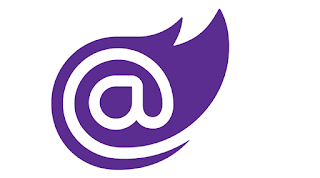Vibe Coding: The Future of AI-Assisted Software Development
 |
| Vibe Coding 101 |
TL;DR:
Vibe coding isn’t just about “letting AI code for you.” It’s a new rhythm of building — intuitive, conversational, and fast. Three YouTube videos by Tina Huang and others break it down beautifully: from fundamentals to mindset to a full app build.
💡 What Is Vibe Coding?
Vibe Coding is a modern approach to software development where you collaborate with AI tools to create applications through iterative, conversational prompting — rather than writing every line yourself.
It’s not “no-code.”
It’s “less manual, more guided, more iterative.”
You describe what you want.
AI builds it.
You refine.
Repeat.
Instead of rigid specifications and long dev cycles, vibe coding prioritizes responsiveness, flow, and intuition. The feedback loop is short — you see results immediately, adjust quickly, and let the design and logic co-evolve.
To demonstrate this:
-
Start with a simple PRD (Product Requirements Document) and evolve it through multiple small iterations.
-
Reflection between prompts, so you don’t just “dump” instructions at AI but co-create intentionally.
-
The end result is functional, polished, and — most importantly — fun to build.
⚙️ The Vibe Coding Workflow
The vibe coding process tends to follow these eight steps:
| Step | Description / Insight |
|---|---|
| 1. Define a high-level vision / PRD | Start with a short outline of the product’s purpose and core features. Don’t over-specify. |
| 2. Set up a minimal scaffold | Create a simple project structure — pages, routes, or placeholders. |
| 3. Generate features (micro-iterations) | Prompt AI to build one feature at a time (e.g., “add a login page”). |
| 4. Live feedback / visual iteration | Preview, tweak prompts, and iterate visually in real-time. |
| 5. Debug/test/validate | Use tools and logs to spot issues. Debug via AI or small code edits. |
| 6. Polish & tune UX | Add styles, animations, and responsiveness. |
| 7. Refactor/clean up | Once it feels right, remove clutter and improve structure. |
| 8. Stabilize & deploy | Add tests, optimize performance, and publish. |
This process is simple but powerful: you move from idea → prototype → product while staying in a creative “flow” state.
⚡ Why Developers Love It
The growing popularity of vibe coding isn’t hype — it’s a response to how AI tools are reshaping development.
Here are its biggest strengths:
-
Fast feedback loops — Build, test, and see results in minutes.
-
Creative flow — Stay in rhythm without context switching or setup fatigue.
-
Low-friction prototyping — Perfect for MVPs and concept validation.
-
Flexible and adaptable — Easy to pivot mid-build.
-
AI leverage — Offload repetitive coding tasks and focus on high-value design or logic.
-
Encourages experimentation — Failure is cheap; exploration is fast.
Even so, I must emphasize one traditional best practice that remains essential:
👉 Use Git.
Version control lets you take risks without fear — you can always roll back.
⚠️ The Downsides (and How to Avoid Them)
Like any creative process, vibe coding has pitfalls.
| Challenge | Why It Happens | How to Avoid It |
|---|---|---|
| Technical debt | Frequent AI-generated edits = messy code. | Refactor often; use linters and code reviews. |
| Endless tweaking | “It’s almost right” syndrome. | Set finish lines and timebox iterations. |
| Weak architecture | Skipping upfront design. | Add lightweight planning or diagrams first. |
| Debug difficulty | Opaque AI code. | Ask AI to explain its code after generation. |
| Team friction | Hard to sync if others don’t vibe the same way. | Document as you go. Keep version history clean. |
| Momentum loss | Flow is fragile; fatigue kills vibe. | Pause strategically — stop while it’s still fun. |
Simple advice?
“When you lose the vibe, don’t force it. Step away. Return fresh.”
🧭 Final Thoughts
Vibe coding isn’t replacing traditional software engineering — it’s expanding it.
It’s about merging human creativity with AI-assisted acceleration.
For seasoned developers, it’s a tool to move faster.
For beginners, it’s an approachable way to learn by doing.
For teams, it’s a cultural shift — from “plan everything first” to “explore, test, refine.”
If coding once felt like architecture, vibe coding feels like music — you jam, adjust, and remix until it feels right.
🧩 Want to Start?
-
Watch Vibe Coding Fundamentals to learn the rhythm.
-
Follow How To Get The Most Out Of Vibe Coding to master the mindset.
-
Build alongside How to Vibe Code an App From Start to Finish.
Then…
Pick an idea.
Hit record.
Start vibing.


%20built%20with%20Blazor.%20The%20scene%20features%20a%20dynamic%20web%20app%20running%20o.webp)
Comments
Post a Comment